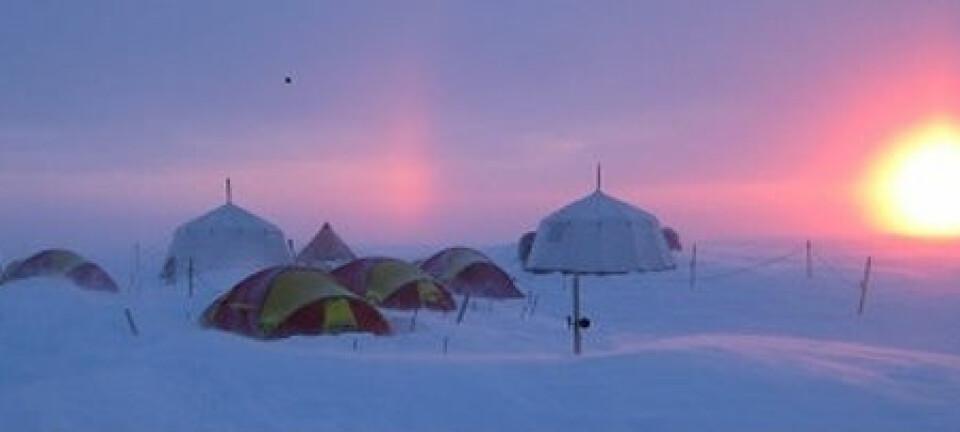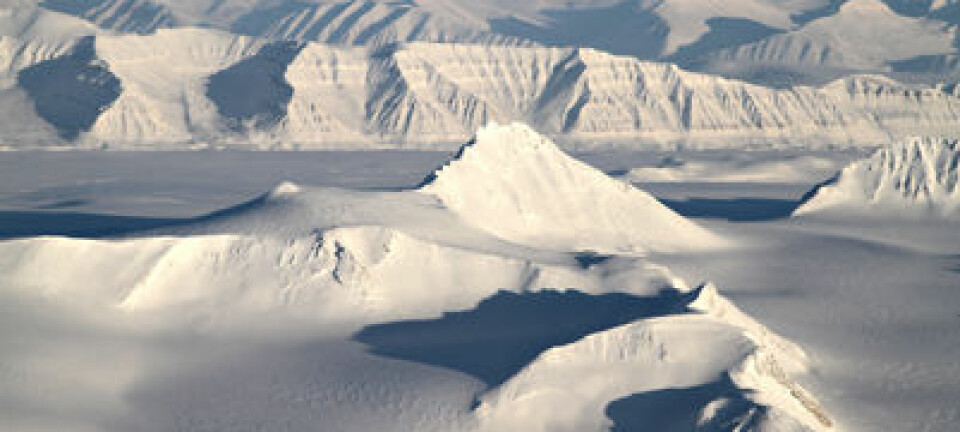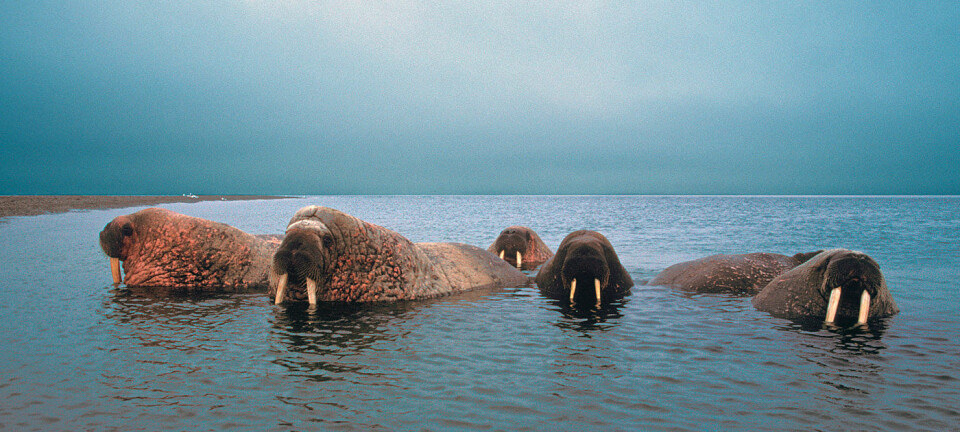This article was produced and financed by The Fram Centre
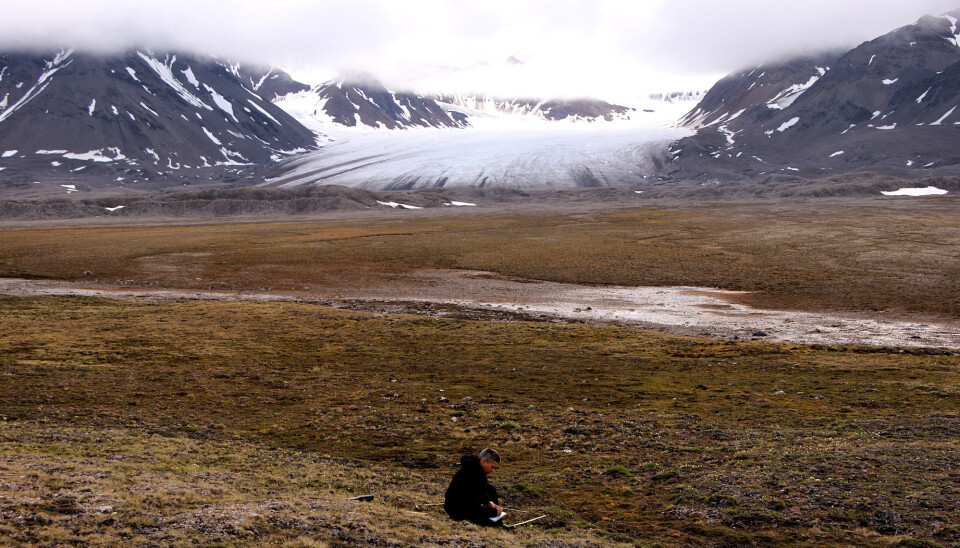
Warmer winters in Svalbard are not good for plants
The far north is becoming greener. Yet, in part of the Arctic, on Svalbard, we are uncertain about what is happening. Climate change has led to warmer summers, but the winters are also having a negative influence on vegetation.
Climate change will make the Arctic greener. Satellite monitoring shows a denser and higher vegetation cover in large parts of the Arctic, especially in the warmest areas bordering the boreal forest zones.
There have admittedly been a few years in between, especially after 2010, when the vegetation in the Arctic has not been greener, which the annual "Arctic Report Card" has shown.
But the main characteristics are not to be mistaken: it has become warmer and greener.
Lack of info about Svalbard
We have not had much information before now on the development of vegetation on Svalbard.
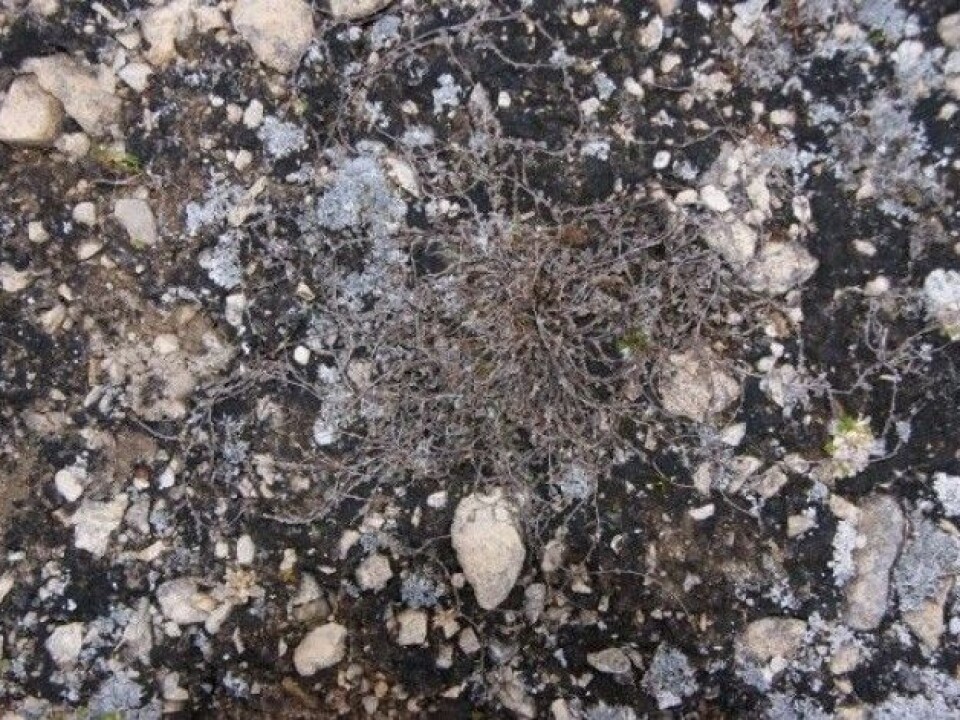
Senior researcher at the Norwegian Institute for Nature Research (NINA) at the Fram Centre, Jarle W. Bjerke, took a closer look at the phenomenon.
"On the map that covers the entire Arctic, Svalbard is most often marked in white, which means the data is missing. This is because the longest series of time we have recorded for the greenness of the vegetation is based on satellite data with low spatial resolution. With the low rough resolution, most of Svalbard is influenced by glaciers and mountains with almost no vegetation. We have therefore been uncertain as to how vegetation on Svalbard is developing," says Bjerke.
New time series
A time series analysis of the vegetation in the central parts of Isfjorden, including the Longyearbyen area and Adventdalen, was published in 2016.
It gave researchers very welcome information about vegetation development on Spitsbergen. This study is based on satellite data for the period 1986 to 2015 with 1-km spatial resolution.
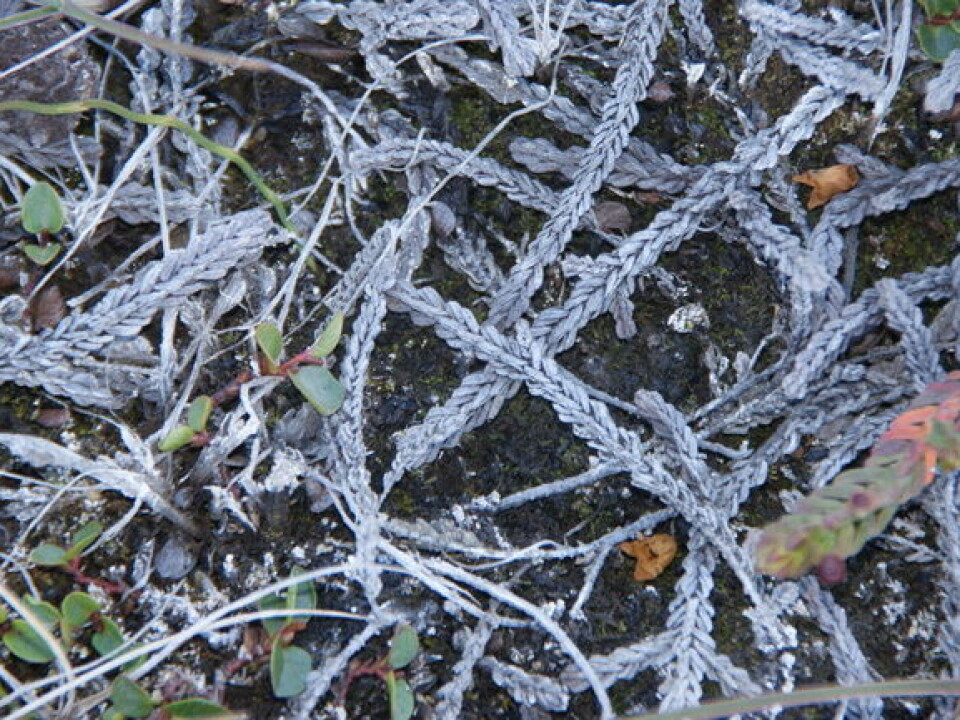
The time series shows that the vegetation in this area of Spitsbergen was slightly greener in the course of this period, but there were large year-to-year variations. In the same period, the temperature in the growing season (from 16 May to 31 July) increased on average by 0.065 °C per year.
The correlation between greenness and temperature in the growing season was good for the entire period as a whole, but by breaking the figures down into 15-year periods, the studies indicated the correlation was far weaker in the latter than in the first part of the study period.
What could be the reason for the reduced correlation between these two variables? Why did vegetation not continue to follow the rise in summer temperatures?
Change to the winter climate
A strong indication of the causes came in a study of changes in winter climate on Svalbard, published in 2016.
Bjerke explains that from the end of the 1960s up to 2015, winter temperatures (October to April) increased by about five degrees. The temperature for July for the same period increased by only approximately 2 degrees.
The change in winter climate on Svalbard is visible in more and stronger waves of mild weather. For example, in February 2014 many long periods of mild weather were reflected in record-high monthly mean temperatures.
At Svalbard Airport near Longyearbyen, February was 14.5 degrees warmer than normal. A similar deviation from the monthly mean temperature would give an average temperature in February of about 10 degrees in Oslo and 15 degrees in Stavanger.
"At Svalbard Airport, all February-months since 2000, except one, have been warmer than normal, " he says.
Mild winters stress the plants
While warmer weather during the summer stimulates an increased growth in the northern latitudes where drought is hardly a problem, warmer winter weather leads to more stress.
Bjerne explains that vegetation in areas normally covered by snow during the winter is used to going dormant in the winter with snow as a protective blanket.
Periods of mild weather reduce snow cover, and hence the degree of insulation. The entire snow cover can often thaw away, or a thick layer of ice forms on the ground during short periods of cold.
"Such interference can damage the vegetation. We knew about this for other vegetation species like heather in the northern boreal birch forest and in the low alpine heath and the grasslands used to produce roughage," he says.
Significant damage
Bjerke and other researchers discovered significant damage to vegetation on Svalbard during the summers of 2014 and 2015. The damage was especially great for evergreen plants and other plants that survive the winter with buds and shoots above ground.
White arctic bell-heather, a beautiful dwarf shrub with white bell-shaped flowers, was one of the species they monitored. The severity of damage to this increased from 2014 to 2015. While the damaged branches of this plant were grey in 2014, and more or less leafless, the damage from 2015 was brown and the leaves were still hanging on.
The mountain avens, a creeping plant with large white rose flowers, was also much damaged in both years. In the report about these damages, they were able to determine that the winters of 2011/12 and 2014/15 had large quantities of precipitation as rain. Much of the vegetation was exposed to weather and wind during these winters, while the rest of the tundra was covered by ice.
They concluded that the older damage observed in 2014 was due to the first of these two winters, while the fresh damage observed in the summer of 2015 was caused by the winter of 2014/15.
"We found strong indications that both the ice sheet and full exposure led to damage to the vegetation," says Bjerke.
Scientists now know that a number of other winters since 2000 have had similar problems to snow and ice conditions.
This led to starvation among reindeer and rock ptarmigan on Svalbard. Increased winter stress is, therefore, the most likely cause of vegetation greenness as measured from the satellite, which is no longer increasing with rising summer temperature.
"We have monitored vegetation at Spitsbergen also, in 2016 and 2017. These results are not yet completed and reported, but we can say so that we have not found any clear sign of recovery of the damaged areas," he says.
Under pressure
In addition to disturbances to the snow cover in winter, the vegetation on Svalbard is also exposed to other types of pressure.
Periods of extreme precipitation in the winter season led to a number of sludge avalanches on steep terrain. The vegetation in several places has washed away, and where the vegetation has not been removed silt and clay have formed on top of the vegetation, which can be harmful to plants and lichen.
Svalbard's coastline is increasingly prone to erosion, primarily due to thawing permafrost. Thawing permafrost will also have an impact on inland areas, in the valleys, where several observers have noticed the tundra breaking up from new streams of thaw water, while the existing gullies are becoming increasingly larger due to edge erosion.
Thawing permafrost is probably due to the fact that much of frost does not reach as deep as it did in past winters, more so than that the summer climate has been warmer.
Not becoming greener
"As long as the winter climate keeps changing faster than the summer climate, there is little evidence that the vegetation on Svalbard will be greener," Bjerke says.
"Nevertheless, some plants that spend the winter underground, and which thus are less vulnerable to changes to the winter climate, may increase in scope and quantity. This applies in particular to the many tufted kinds of grass living in humid parts of the tundra. Maybe they will increase in quantity at the expense of the white arctic bell-heather, mountain avens and other plants that spend the winter with shoots and buds above the ground," he concludes.
Svalbard is heading for some exciting decades when it comes to vegetation developments.
References:
Bjerke J.W. et al.: 2017. Understanding the drivers of extensive plant damage in boreal and Arctic ecosystems: Insights from field surveys in the aftermath of damage. The science of the Total Environment 599-600: 1965-1976.
See all referenses in the article (in Norwegian) at The Fram Centre
The results discussed here are from projects funded by EEA's Poland-Norway-program, the Research Council of Norway's, The Fram Centre and the Svalbard Environmental Protection Fund.
----------
Read the Norwegian version of this article at forskning.no







